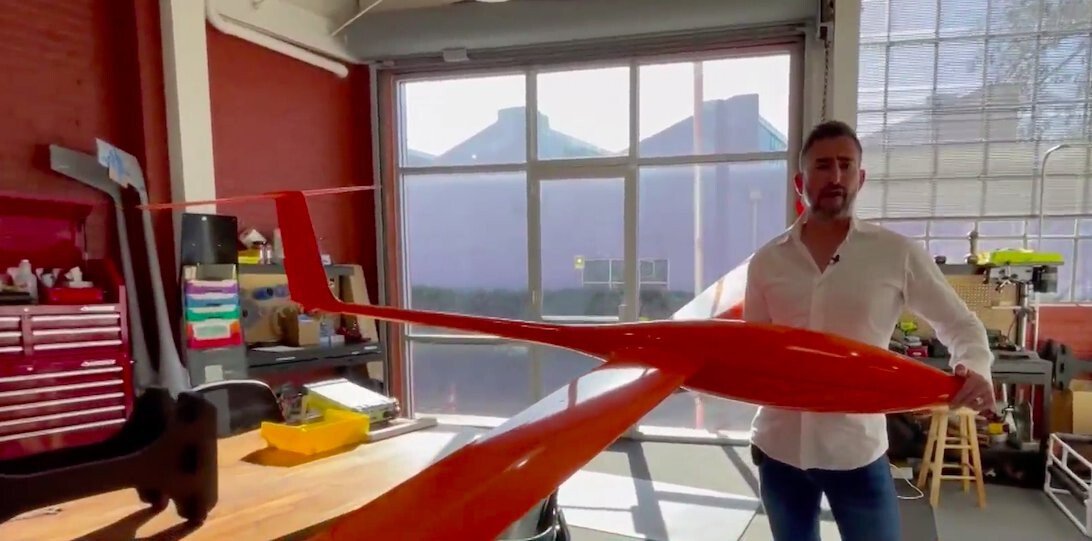Bay Area startup sets sights on developing ‘perpetually flying drone’

Stefan Kraus
By Kiet Do
Click here for updates on this story
EMERYVILLE, California (KPIX) — A Bay Area startup has set its sights on developing a “perpetually flying drone”, that can stay airborne for days, or even weeks at a time, by using artificial intelligence to detect rising air thermals.
Kraus Hamdani Aerospace, based in Emeryville, says it successfully completed a 26-hour, non-stop flight earlier this year.
Stefan Kraus, the co-founder and CTO, dismisses critics who pass off the effort as mere science fiction talk.
“We have the engineers, we have the science. We do know what we’re doing,” said Kraus. “By the end of this year you will. So by 2022, absolutely.”
The company’s flagship drone, the K1000 Ultra Long Endurance Unmanned Aerial System, has a wingspan of 16 feet, but weighs only 15 pounds.
The large wings also provide ample surface area for solar panels, that are used to recharge the battery. According to Kraus, the aircraft’s proprietary materials add strength and rigidity, but not weight.
To further reduce weight, the vehicle has no landing gear, and instead scrapes to a halt on replaceable 3D-printed plastic skids.
“This is basically like my own child. For me, this is everything,” said Kraus.
Fatema Hamdani, the other co-founder and CEO, said the engineering and design teams looked to nature for inspiration for long-endurance flights.
According to Hamdani, the aircraft’s sensors scan for thermals, rising pockets of hot air, and shut off the engines to conserve power. The engine’s blades then fold back to reduce drag, and the drone essentially converts to a glider.
“So we looked at birds, birds that fly long distances,” he said. “They’re not constantly flapping their wings. We are constantly monitoring environmental conditions, algorithmically, then feeding that back into the autopilot so we can optimize on that.”
Hamdani hopes long endurance drone flights will allow technology to “change the world”, by improving long-term surveillance or search and rescue operations. The company is also testing radio and cell phone transmitters on board.
Being airborne for long stretches also has implications for climate research and real-time 24/7 monitoring of wildfires. Traditional manned flights over wildfires are often difficult and hazardous because of smoke, and usually do not occur during nighttime hours.
“Persistent assets that are flying nonstop, fully autonomously, most cost effectively and efficiently, can change how we do disaster management,” said Hamdani. “Today we’re doing what people thought would never be possible. It’s a contribution, and all of us are drops in the ocean that contribute to changing the world.”
Please note: This content carries a strict local market embargo. If you share the same market as the contributor of this article, you may not use it on any platform.
